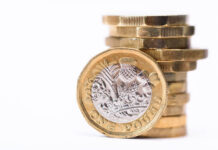The Japanese has edged lower to start the week. In North American trade, USD/JPY is trading at 106.86, up 0.42% on the day. In Japan, PPI edged lower to 2.5%, matching the estimate. Tertiary Industry Activity declined for a second straight month, with a reading of -0.6%. This was weaker than the estimate of -0.2%. Later in the day, we’ll get a look at Core Machinery Orders and the BoJ Minutes from the January meeting. In the US, CPI and Core CPI both slowed to 0.2%. On Wednesday, the US releases key inflation and consumer spending reports.
Inflation indicators have softened in both the US and Japan. In the US, CPI dropped from 0.5% to 0.2%, and Core CPI edged lower to 0.2%, down from 0.3%. In Japan, the Producer Price Index dropped for a third straight month in February. Lower inflation could have a significant impact on monetary policy in both Japan and the US. The Bank of Japan has consistently said that it will not reduce its stimulus program until inflation moves higher, while in the US, if inflation does not move upwards, the Fed could maintain its projection of three rate hikes in 2018. If inflation does increase, there is a stronger likelihood of four rate hikes this year.
The markets are keeping an eye on the BoJ minutes from the January meeting, which could provide some clues as to future monetary policy. There have been some mixed messages from the Bank, which made no changes in interest rate levels at last week’s policy meeting. The Bank sounded optimistic about economic growth, which has been moderate but steady, thanks to a strong export sector. However, BoJ Governor Haruhiko Kuroda was decidedly dovish in his remarks, saying that the BoJ would consider further easing if inflation did not reach the bank’s target of around 2% by 2020. These comments mark a 180-degree turn from remarks just a week earlier, in which Kuroda talked about the possibility of an exit from stimulus, which sent the yen upwards.













